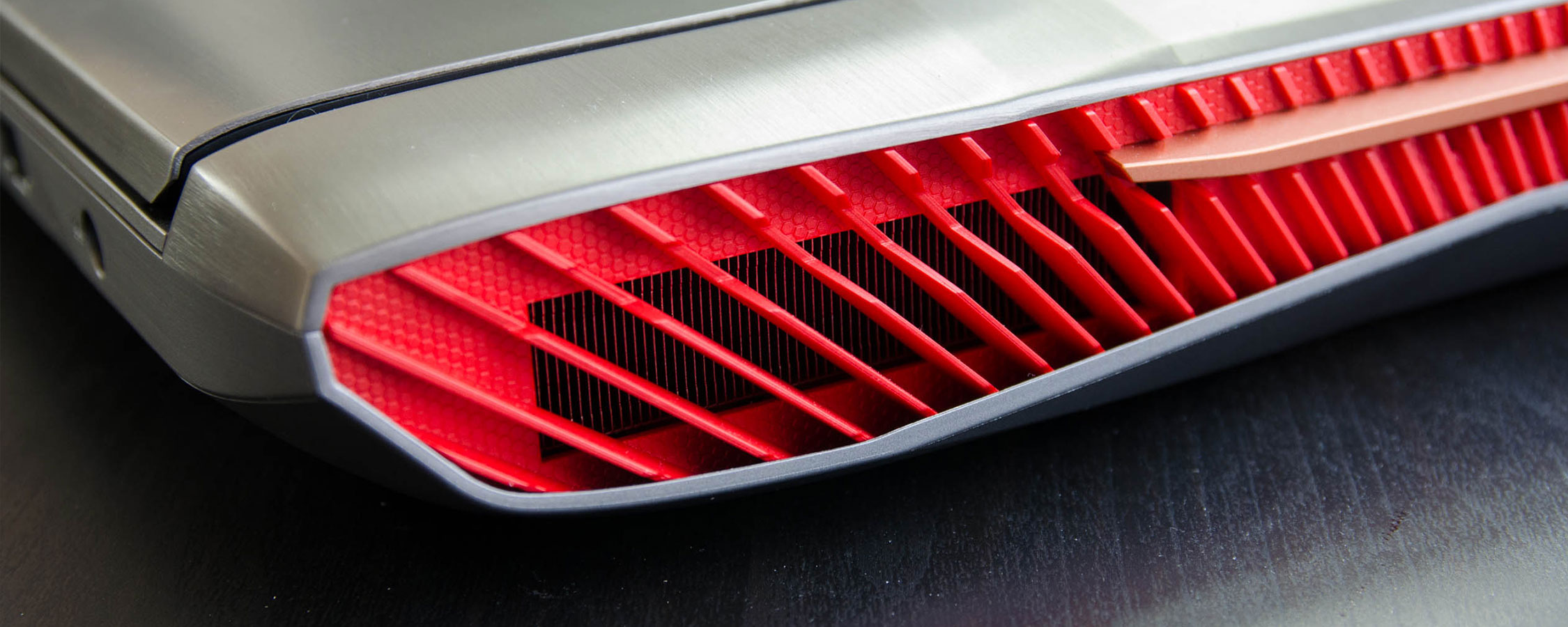Hardware Overview
The most interesting aspect of any gaming laptop is, of course, the performance. While all G752VS models include a GeForce GTX 1070 GPU, there are many variants available at different price points. I've highlighted some of the main models below:
- Intel Core i7-6700HQ, 16 GB of RAM, no SSD, 1 TB HDD, 1080p LCD - $1,999
- Intel Core i7-6820HK, 32 GB of RAM, 256 GB SSD, 1 TB HDD, 1080p LCD - $2,499
- Intel Core i7-6820HK, 64 GB of RAM, 512 GB SSD, 1 TB HDD, 1080p LCD - $2,999
- Intel Core i7-6820HK, 64 GB of RAM, 1 TB SSD, 1 TB HDD, 1080p LCD - $3,299 - Reviewed
It should be noted that there are more options available at prices between $1,999 and $3,299, mostly varying the amount of storage and memory included, so it's worth checking out stores like Newegg and Amazon to see what's available. There should also be a 4K variant on the market, however I couldn't find one.
In this review I'll be mostly discussing the model I received, which comes with the more powerful Core i7-6820HK CPU. This is a four core, eight thread Skylake part built on a 14nm process and featuring a 45W TDP. Intel has given this CPU a base frequency of 2.7 GHz with a 3.6 GHz single-core boost clock, although Asus has factory overclocked this processor to 3.8 GHz.
The Core i7-6700HQ is clocked 100 MHz lower in both base and boost frequencies, and includes 6 MB of L3 cache rather than 8 MB.
The Nvidia GeForce GTX 1070 is a significant upgrade on the GTX 980 for Notebooks, Nvidia's last generation flagship mobile GPU. The GTX 1070, going on raw figures, is 28% faster than the GTX 980 and nearly twice as fast as the GTX 980M, despite a TDP increase of just 3% and 50%, respectively. And this isn't even the fastest mobile GPU in the GeForce 10 series!
The GTX 1070 is an interesting chip because it's a slightly different bin of the Pascal GP104 GPU that Nvidia also used for the desktop GTX 1070. The mobile variant actually features more CUDA cores (2048 versus 1920), which helps offset reduced clock speeds (1442/1645 MHz base/boost versus 1506/1683 MHz). In fact, the mobile variant of the GTX 1070 should be slightly faster than the desktop variant, with all other things equal. The memory subsystem is the same: 8 GB of GDDR5 on a 256-bit bus, providing 256 GB/s of bandwidth.
Like the CPU, Asus has factory overclocked the GPU by 50 MHz on both the base and boost clock, and given an extra 150 MHz to the memory. This gives a maximum rated GPU boost clock of 1695 MHz, and a significant 8300 MHz on the memory. To achieve these overclocks, make sure you enable the "Extreme" mode from within the ROG Gaming Center; I've tested this laptop in Extreme mode because I assume everyone will enable this while gaming.
My review unit includes a ridiculous 64 GB of DDR4 2400 MHz memory, which is way more than any modern game would need, and is even unnecessary for workloads like video editing. 32 GB is plenty, so you shouldn't make any purchasing decisions based on the amount of RAM.
The storage situation is typical for a modern gaming laptop, packing a slow 1TB 7,200 RPM drive for games archival, and a fast PCIe NVME solid state drive for boot and games. In my top-spec review unit, the 1 TB SSD is actually a RAID 0 array of two 512 GB SSDs from Toshiba and Samsung, though in other models I suspect it will be a single 256 or 512 GB drive, leaving the second M.2 slot free.
For connectivity, there's Wi-Fi 802.11a/b/g/n/ac with 2x2 MIMO, and Bluetooth 4.1. Plus don't forget there's an Ethernet port and a USB Type-C port supporting Thunderbolt 3 and USB 3.1 gen 2.



